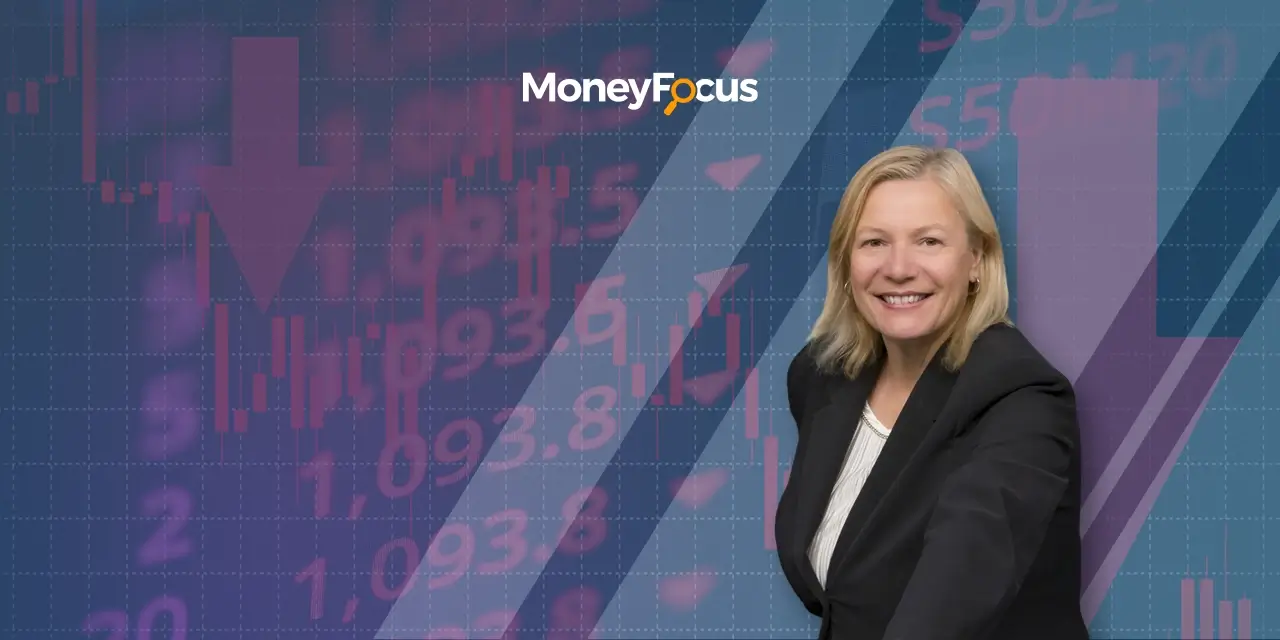By Caroline Grimont
For as long as I can remember, people around me have been obsessed with how they look. I don’t mean just the immediate people next to me – though they might be, as well. I mean the media we consume, the advertising we see, the fashion we wear. As I was telling one of my nieces a few weeks ago, because she’s so young, everything is new or news to her, but I’m old enough to remember that these obsessions have been around forever.
Whether it was weight loss diets like Atkins, or Keto, Beyonce’s Master Cleanse, or Oprah’s fat wagon, weight loss treatment has been around for a while. And I do mean a while – Hippocrates was writing about using diet and exercise to combat obesity in the 3rd century BCE, and closer to modern times, the diminutive Queen Victoria’s eating habits and struggles with weight were captured in a book titled, “The Greedy Queen.” The point is, we’ve seen people struggle, and fail, to lose weight or keep it off – until now.
Unless you’ve been living under a rock, you can’t have missed celebrities of all stripes shrinking, some after years of weight oscillation. Many of them credit semaglutide, or GLP-1 agonists like Ozempic, Mounjaro, Zepbound, and Wegovy. I’m talking Elon Musk, Kelly Clarkson, Whoopi Goldberg, and James Corden. I have to add here that the Kardashians deny using these drugs, despite rumours to the contrary.
So what exactly are GLP-1 agonists? And are all these drugs the same? Let’s find out.
What Are the New Generation of Weight Loss Drugs?
GLP-1 stands for glucagon-like peptide-1, which is a naturally occurring hormone in your small intestine, whose job it is it to help regulate both your blood sugar levels, as well as your appetite. After you eat, it is this hormone that signals to your brain that you’re full, by producing insulin. As you can probably tell, GLP-1 could be (and has become, in the past decade) a powerful tool to control both diabetes and obesity.
GLP-1 was discovered in the 1980s, by Joel Habener and Svetlana Mojsov. Synthetic versions of the hormone have been used to treat type 2 diabetes for a couple of decades now, usually as GLP-1 agonists, or a class of medications that mimic the actions of GLP-1.
However, it is in the past decade that researchers, celebrities and the general public realized that these drugs are also extremely effective at helping people lose a significant amount of weight. In 2017, Danish pharmaceutical major Novo Nordisk launched Ozempic, originally marketed for diabetes, and followed it up with Wegovy in 2021. In 2022, Eli Lilly launched Mounjaro, and in 2023, launched Zepbound.
According to an article in the New England Journal of Medicine, participants who received semaglutide were more likely to lose 5% or more, 10% or more, 15% or more, and 20% or more of baseline body weight at week 68 than those who received placebo. Suddenly, these GLP-1 drugs weren’t just used for managing diabetes, but were almost like secret weapons behind dramatic weight loss transformations.
What is the Market for GLP-1 Agonists?
The World Health Organization says that 1 in 8 people in the world were living with obesity (as of 2022), 2.5 billion adults (18 years and older) were overweight, and of these, 890 million were living with obesity. Meanwhile, an estimated 537 million adults aged 20–79 years are currently living with diabetes. This represents 10.5% of the world’s population in this age group, with the total number is predicted to rise to 643 million (11.3%) by 2030 and to 783 million (12.2%) by 2045.
At the very least, this indicates a need for safe, effective and affordable medication to combat the effects of obesity and to treat diabetes. Several global pharmaceutical giants have launched, or are trialling GLP-1 drugs to treat these conditions.
According to a Research and Markets report in 2025, the global GLP-1 market is estimated to grow from USD 49.3 billion in the current year to USD 157.5 billion by 2035, at a CAGR of 11.1% during the forecast period, till 2035. The report finds Boehringer Ingelheim, Eli Lilly, Novo Nordisk dominating, and notes that:
- 60% of the GLP-1 drug candidates are currently being evaluated in clinical stages of development; of these, most of the candidates target metabolic disorders, such as Type 2 diabetes and obesity.
- The current market landscape of GLP-1 drugs is fragmented, featuring the presence of both new entrants and established players; majority of these firms are based in China (36%) and the US (28%).
- Partnerships related to GLP-1 drugs have steadily grown in the recent past; notably, close to 50% of these deals were signed for drug development and commercialization.
- Lifestyle changes, influence of social media, celebrity endorsements and direct to consumer advertisements have led to a surge in the demand for GLP-1 drugs.
Weight Loss is Healthcare
As Harvest ETFs CIO Paul Macdonald explains, weight loss and healthcare are deeply interconnected markets, and share some key growth drivers. “Populations in North America and Europe are aging, and as we age we come to need more healthcare services overall. Aging is also associated with an increase in body fat percentage and likely greater need for weight loss services to prevent weight-related health issues. The weight loss market has a wide variety of drivers and opportunities, many with direct connections to the healthcare sector. By innovating these new weight loss drugs, large-cap pharmaceutical companies have opened a new way to meet the growing global need for weight management and opened a huge market in the process,” he writes.
In particular, Macdonald highlights U.S. pharmaceutical firm Eli Lilly, and Mounjaro, which is considered a GLP-1 class, the trials of which have shown it led to weight loss of about 22.5% in people who were obese or overweight but in non-diabetic populations.
Are there Opportunities For Investors ?
Investors are already keen on the companies innovating weight loss drugs. As Macdonald says, with more companies launching their drugs and gaining market share many investors will be asking how they can invest in this emerging trend and potentially massive market.
Consider the Harvest Eli Lilly High Income Shares ETF, ticker LLYH if you are as investors looking to gain exposure to a particular blue-chip and want regular cash distributions. The fund invests all its assets in shares of Eli Lilly, a leading pharmaceutical company that specializes in the development of medicines for diabetes, cancer, and autoimmune diseases. Its strong portfolio of innovative drugs and focus on R&D makes Eli Lilly a major player in the healthcare sector. Eli Lilly is the parent company of Mounjaro and Zepbound.
LLYH pays monthly distributions. To support its monthly cash distributions, LLYH overlays an active covered call writing strategy on up to 50% of the position. Units of the ETF are available in CAD (LLYH) and USD (LLYH.U).
If you like the sound of all of this, and are comfortable with leverage, this fund also has an enhanced leverage option – the Harvest Eli Lilly Enhanced High Income Shares ETF, ticker LLHE – which, alongside the active covered call writing strategy on up to 50% of the portfolio, also applies modest leverage at around 25% for higher income and growth potential. Units of the ETF are available in CAD (LLHE) and USD (LLHE.U).
How Do Covered Call Single Stock ETFs Work?
Covered call single stock ETFs, such as the ones featured in Harvest’s High Income Shares suite, take a long-term view of the underlying stock, and then sell call options on the said stock. A call option is also a financial derivative contract, which gives the buyer the right (but not the obligation) to buy the underlying security, in this case, the stock held by the ETF, at a predetermined price, within a certain period of time. This price is called the strike price. The buyer pays a price i.e. option premium to the ETF for this call option, and this premium is the income for the ETF, that is paid out to the unit holders of, in this case, the single stock ETF.
Now what happens when the period of time is up? If the stock price in the general market rises above the strike price, the option holder will likely exercise his/her right to buy the stock, and the ETF will, theoretically, need to sell the stock at that strike price. If the stock price in the general market is below the strike price, the ETF gets to keep both the stock, and the option premium. Meaning that the ETF gets to keep both the income from the call option, as well as the stock. You can read more about covered calls here.
Who are Single Stock ETFs for in Canada?
For those who like a stock but also want steady income, Single Stock ETFs with covered calls offer a way to earn monthly cash distributions while staying invested. This strategy provides exposure to individual companies while aiming to generate income using a covered call strategy, making it an option for investors looking to balance growth potential with regular cash flow.
Why Harvest for Single Stock ETFs?
Harvest ETFs is a market leader in call option ETFs. Harvest launched its first ETFs in 2016 and has established itself as one of the top option writing firms in Canada. Harvests’ key objective is to actively generate monthly cash flows. For its Equity Income funds, Harvest has a maximum 33% on any position written, to support regular cash distribution, and exposure to the upside potential. Its single stock lineup has the flexibility to write up to 50%. The Harvest strategy specifically has an active & flexible monthly determination of how many options are required, how many and when to write each option to help generate the net cash flow required for the distribution. You can find out more about the Harvest strategy here.
What About Taxes?
From a tax standpoint, it is important for Canadian investors to remember that this income received from covered calls is considered capital gains instead of interest income or dividend. This is important, because 50% of income from capital gains (up to $250,000) is generally tax free, while the remainder is taxed at your marginal rate. However, interest income is taxed as ordinary income. Note, though that most Harvest Equity Income ETFs hold primarily U.S. equities, which would not be eligible for the Canadian Dividend Tax Credit.
What’s the Bottom Line?
GLP-1 agonists like Zepbound and Mounjaro are changing the world – no, literally. Remember WW, formerly known as Weight Watchers? The company that came about in the 1960s to help Americans shed the extra weight is facing such disruption and financial pressure from weight loss drugs that it is considering filing for bankruptcy, the Wall Street Journal reports. Consumers have stopped snacking, and companies like Coca-Cola and Danone are paying attention.
If you’re an investor who thinks that this change is only the beginning, want a regular income, and are willing to sacrifice a little bit of that upside for a regular cash flow, you could consider the Harvest suite of single stock ETFs, and LLHE and LLYH!
Disclaimer
Commissions, management fees and expenses all may be associated with investing in Harvest Exchange Traded Funds (managed by Harvest Portfolios Group Inc.) Please read the relevant prospectus before investing. This article is meant to provide general information for educational purposes. Any security or investment mentioned herein is for illustration purposes and should not be taken as an invitation to purchase or sell such security or investment. The content of this article should not be construed as investment advice. Tax, investment and all other decisions should be made with guidance from a qualified professional.











